Purifying Heaters
Fast heating and high-velocity cooling
Compare
-
Dyson Purifier Hot+ Cool HP2 De-NOx
Latest technology
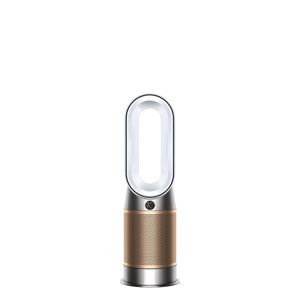 from $699.99Dyson Purifier Hot+ Cool HP2 De-NOx
from $699.99Dyson Purifier Hot+ Cool HP2 De-NOx -
Dyson Purifier Hot + Cool HP1
Latest technology
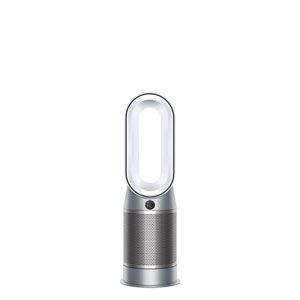 from $499.99Dyson Purifier Hot + Cool HP1
from $499.99Dyson Purifier Hot + Cool HP1
-
Dyson Purifier Hot+ Cool HP2 De-NOx

Heats and cools you
-
Dyson Purifier Hot + Cool HP1

Heats and cools you
-
Dyson Purifier Hot+ Cool HP2 De-NOx

Whole room projection
-
Dyson Purifier Hot + Cool HP1

Whole room projection
-
Dyson Purifier Hot+ Cool HP2 De-NOx
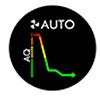
PM 2.5, PM 10, VOCs, NO₂, Formaldehyde, CO₂, Temperature, and Humidity
-
Dyson Purifier Hot + Cool HP1

PM 2.5, PM 10, VOCs, NO₂, Temperature, and Humidity
-
Dyson Purifier Hot+ Cool HP2 De-NOx

Automatic monitoring
-
Dyson Purifier Hot + Cool HP1

Automatic monitoring
-
Dyson Purifier Hot+ Cool HP2 De-NOx
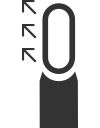
Backward airflow
-
Dyson Purifier Hot + Cool HP1

Backward airflow
Advanced filtration
With long-life filters that are quick and easy to replace, Dyson purifiers capture 99.97% of fine particles¹ such as allergens and household pollutants from the air, including dust and bacteria.
-
Dyson Purifier Hot+ Cool HP2 De-NOx

Destroys formaldehyde
-
Dyson Purifier Hot + Cool HP1

-
Dyson Purifier Hot+ Cool HP2 De-NOx
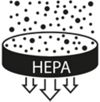
HEPA filtration
-
Dyson Purifier Hot + Cool HP1

HEPA filtration
-
Dyson Purifier Hot+ Cool HP2 De-NOx
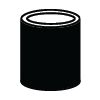
Absorbs NO₂
-
Dyson Purifier Hot + Cool HP1

Additional features
-
Dyson Purifier Hot+ Cool HP2 De-NOx
Filter longevity: 12 months or when alerted by the MyDyson™️ app
-
Dyson Purifier Hot + Cool HP1
Filter longevity: 12 months or when alerted by the MyDyson™️ app
-
Dyson Purifier Hot+ Cool HP2 De-NOx

MyDyson app + Voice control
-
Dyson Purifier Hot + Cool HP1

MyDyson app + Voice control
-
Dyson Purifier Hot+ Cool HP2 De-NOx
Up to 350 degrees oscillation
-
Dyson Purifier Hot + Cool HP1
Up to 350 degrees oscillation
-
Dyson Purifier Hot+ Cool HP2 De-NOx
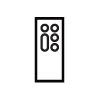
Remote control included
-
Dyson Purifier Hot + Cool HP1

Remote control included
-
Dyson Purifier Hot+ Cool HP2 De-NOx

Energy Star Certified
-
Dyson Purifier Hot + Cool HP1

Energy Star Certified
-
Dyson Purifier Hot+ Cool HP2 De-NOx
Warranty
2-year warranty
Dimensions
L 5 x W 9.8 x H 30 in
Weight
12.6lb
-
Dyson Purifier Hot + Cool HP1
Warranty
2-year warranty
Dimensions
L 5.12 x W 8.1 x H 30 in
Weight
12.5lb
- Dyson Purifier Hot+ Cool HP2 De-NOx Shop now Dyson Purifier Hot+ Cool HP2 De-NOx
- Dyson Purifier Hot + Cool HP1 Shop now Dyson Purifier Hot + Cool HP1
Dyson purifying heating fans
Choose your model
-
Explore Dyson air purifiers by functionality
Dyson offers a range of advanced purifiers that remove gases and odors² and capture 99.97% of allergens* and pollutants 0.3 microns in size.
-
Purifiers
Dyson purifiers capture gases,² allergens* and 99.97% of fine particles.
-
Purifier humidifiers
Automatically humidifies and purifies.
Get more from your Dyson with the MyDyson™ app▴
-
Expert guides and content
From quick-start and how-to guides to understanding different modes and screens. All tailored to you and your machines.
-
Automated filter alerts
You'll never need to worry about when to replace your filter. We'll let you know. Helping your machine to always perform at its best.
-
Tailored support
Maintenance advice and troubleshooting, when you need it. You can also activate tailored machine support, direct to your inbox.
▴The MyDysonTM app is only compatible with select Dyson products. For a list of compatible products, please click here.
-
Allergens
An allergen is a substance that can cause an allergic reaction by triggering the body’s immune system. Common indoor allergens include pet dander and pollen.¹⁰
-
Bacteria
Microscopic, single-celled organisms that can exist in their millions, in every environment. Not all bacteria are harmful, but some can have adverse effects, such as E. coli.¹⁰
-
Benzene
Benzene is colorless, flammable liquid produced by both natural and man-made processes. It’s a natural part of crude oil, gasoline, and cigarette smoke. Indoors, it comes from products such as glues, paints, furniture wax, and detergents.
-
Carbon dioxide (CO₂)
A colorless greenhouse gas, which comes from the extraction and burning of fossil fuels. Increased CO₂ levels can impact cognitive function.
-
Formaldehyde
This colorless, flammable gas is used in some building materials and household products. Sources can include some fabrics found in flooring and furniture, glues, paints, varnishes, air fresheners, and household cleaners.
-
HEPA 13
HEPA (High Efficiency Particulate Air) is an air filter efficiency standard and a measure of a filter’s performance. To achieve this standard, filters must meet a minimum of 99.95 per cent particle removal at the most penetrating particle size.
-
Humidification
A process of increasing air moisture content through the addition of water vapor or steam. Humidifiers can add moisture to the air in dry conditions, creating a more comfortable indoor environment when needed.
-
Microns
Airborne particles are usually described in microns. One micron is equal to one-millionth of a meter. The human eye can see debris and dust that are approximately 25 microns in size.
-
Nitrogen dioxide (NO₂)
Nitrogen dioxide is a liquid below 70.2°F and a gas at higher temperatures. It is toxic to humans in both states in high concentrations. Gas stoves and space heaters are the most common indoor sources of NO₂ emissions. Other sources include improperly vented furnaces and water heaters.
-
Pet dander
Pet dander is made up of tiny particles of skin, saliva and urine, shed by animals with fur or feathers. Pet dander lingers in the air before settling on surfaces such as furniture, bedding, and fabrics. Exposure to these airborne particles can trigger allergies.¹⁰
-
Particulate matter (PM)
Particulate matter contains microscopic solids or liquid droplets, measured in microns. Indoor PM can be generated through many day-to-day activities such as cooking, cleaning, and the burning of candles and fires.
-
Purification
The process of reducing unwanted contaminants. Air purification is intended to remove airborne pollutants. Depending on the method, air purification can remove dust, allergens, or viruses.10
-
Volatile organic compounds (VOCs)
Volatile organic compounds are potentially harmful gases found in many household products. Common sources include paints, varnishes, air fresheners, cosmetics, and cleaning products.
-
Pollen
Pollen is a powdery substance released from seed plants as part of their reproduction process. It typically appears from trees in the spring, grasses in the summer, and weeds in the autumn. Pollen grains are among the most common allergens.¹⁰
-
Aspergillus mold
A common name for a visible group of fungi, mold thrives wherever there is dampness – sending out millions of spores into the air. Exposure to mold occurs via inhalation, skin contact, or ingestion.¹⁰
-
-
Frequently asked questions
Some heaters use gas as a fuel source, while others use electricity.
Gas heaters burn natural gas or propane to produce heat, while electric heaters use electricity to heat up a heating element or a ceramic plate to produce heat.
Portable electric heaters are typically used to heat small spaces or individual rooms.
No heater should be left on overnight without proper precautions, but some types of heaters are generally considered safer than others.
Electric heaters with an automatic shut-off feature are designed to automatically turn off when they reach a certain temperature or go above it.
Electric heaters with a thermostat are designed to turn off when the desired temperature is reached and turn back on when the temperature falls below a certain level.
This can save energy compared to heaters that run continuously.
It's important to note that the energy efficiency of a heater also depends on factors like the size of the room, the insulation of the room, and the frequency of use.
Choosing an energy-efficient heater is just one step towards reducing your energy consumption and costs; it's also important to use the heater appropriately, such as by adjusting the thermostat, using it only when needed, and properly maintaining and cleaning the unit.
Heaters work by converting some form of energy, such as electricity, gas, or oil, into heat.
The heat is then transferred to the surrounding environment to raise its temperature.
The price of space heaters can vary widely depending on the type and features of the heater.
The amount of electricity a heater uses depends on several factors, including the size of the heater, the type of heater, and how often it is used.
Modern electric heaters are designed with energy efficiency in mind and can vary in terms of their power usage.
▴The MyDysonTM app is only compatible with select Dyson products. For a list of compatible products, please click here.
*Allergens refers to nonliving material.
⁺Third party full machine testing based on GB/T 18801-2022 formaldehyde cumulative clean mass testing with continuous injection until plateau of formaldehyde CADR is achieved. Results may vary in practice.
²Gas capture rates may vary.
³Fan; not an air conditioning unit
⁵Requires device to run app, Wi-Fi or mobile data, Bluetooth 4.0 support, and iOS version 10 or Android version 5 (or above). Standard data and messaging rates may apply. Refer to the MyDyson app for compatible voice services.
⁸Tested In maximum setting for air projection, tested in Auto mode for purification coverage, tested for room heating per relevant Dyson method DTM961.
⁹Particle challenge by DEHS oil specified in EN1822 within a chamber specified in ASTM F3150.
¹⁰Not intended as a product claim. Refer to individual Dyson models for specific capture claims.

















